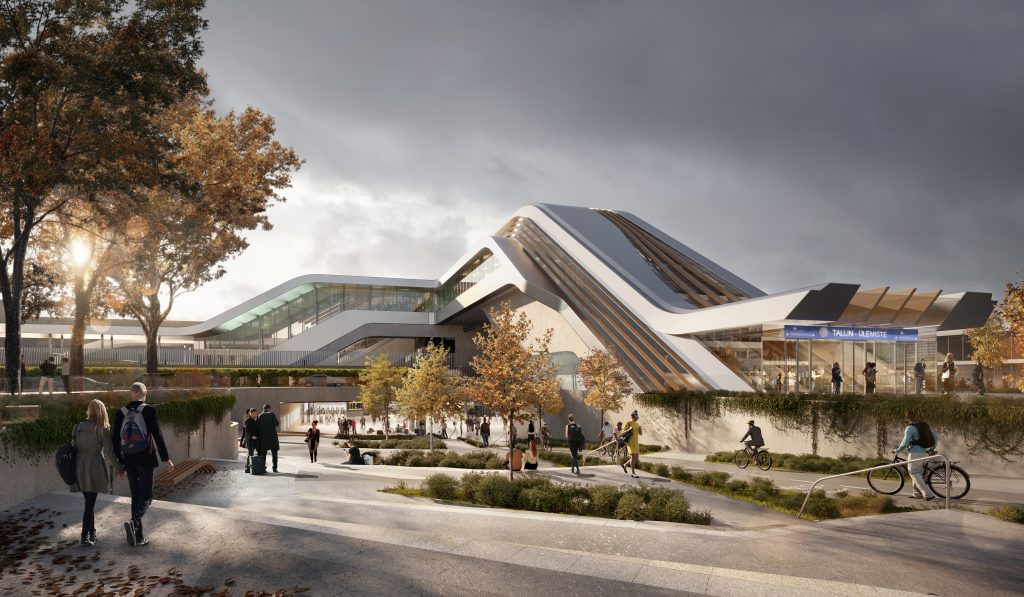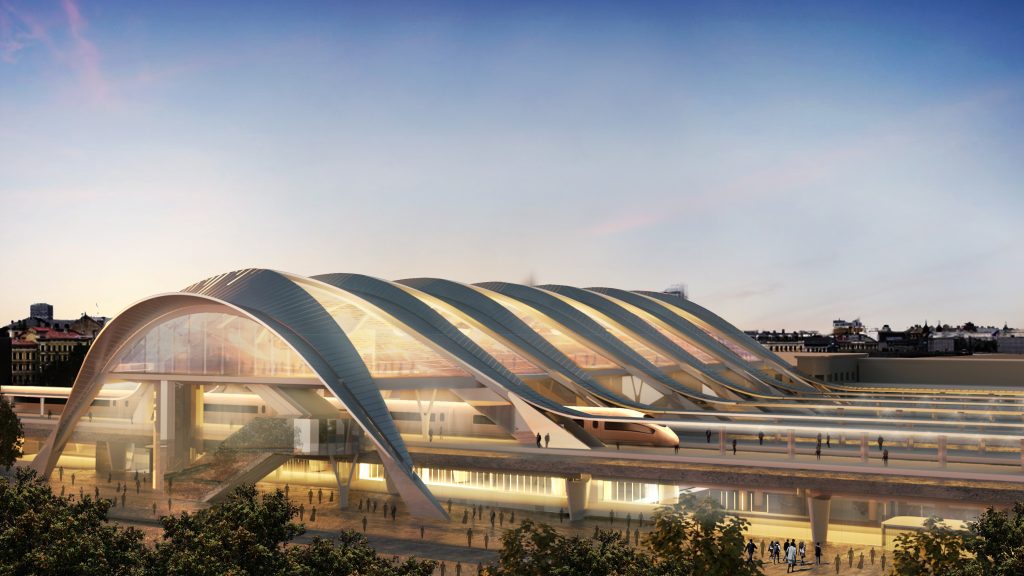Urban rail projects are game changers for making cities better, transforming traditional railway stations into dynamic hubs that go beyond mere structures. Ramiro Alberto Rios, who works at the The World Bank, talked about the diverse opportunities presented by these stations at the Rail Baltica Academy. He emphasized the importance of integration, accessibility, climate resilience, and careful planning to fully unleash their potential.

Urban Transport Integration and Placemaking
Recognizing that public transport alone may not create a vibrant environment, integrating urban rail with housing and workplaces generates a steady flow of customers for supporting services. New infrastructure opens avenues for innovative and improved services, while rail stations act as gateways to socio-economic activities, fostering development and prompting housing and commercial growth.
Transit-oriented development plays a vital role in shaping urban form, increasing accessibility, and engaging in participatory planning and communication.
Accessibility, Urban Regeneration, and Shaping Urban Form

By facilitating infrastructure sharing and prioritizing climate-proofing measures, railway stations can spur and shape development. The integration of climate change mitigation and adaptation measures into long-term infrastructure projects aligns with global climate objectives, such as the Paris Agreement and the EU’s climate targets. Taking a sustainability approach in all project phases and maximizing the lifespan of infrastructure beyond 2050 is key to sustainability and ensures climate neutrality and resilience.
Designing for People and Long-Term
A holistic approach to design extends beyond transportation infrastructure, emphasizing rigorous integration with the surrounding environment and offering incentives for transit-oriented development. Effective land use planning and transport coordination play pivotal roles in achieving successful implementation and operation. Additionally, creating cycling and walking infrastructure that connects to stations ensures optimal access and integration. Regular review and updates to legal and regulatory frameworks are necessary to achieve optimal outcomes, while early engagement and incentivization of public-private partnerships (PPPs) can maximize the station’s potential.
By prioritizing integration, accessibility, climate resilience, and careful planning, stations can become centres of activity, connecting people, fostering economic growth, and shaping the urban landscape.

Rail Baltica International Passenger Stations
Seven Rail Baltica international stations are planned along the high-speed rail infrastructure: Tallinn Ülemiste, Pärnu, Riga Central Hub, Riga International Airport, Panevėžys, Kaunas, and Vilnius.
To guarantee their role as multimodal transportation hubs and as important engines for the economic development of their immediate urban environment and beyond, the study on maximization of the broader socio-economic benefits or Gross Value Added (GVA) for Rail Baltica international passenger stations, was conducted by a consortium led by Ramboll, including Gottlieb Paludan Architects, Architects Soini & Horto, RealDeal, generating a number of recommendations, ranging from applicable in a short-run as well as in a broader long-run planning and continuous development perspective.
Access the study here for further details.

Significant progress has been made in the development of Rail Baltica’s international stations across the Baltic countries. In Ülemiste, Estonia, next milestone has been reached with the signing of a contract for the design and construction of the Rail Baltica Ülemiste terminal. This is the largest construction contract for Rail Baltica in Estonia so far, and work, including the construction of the terminal building’s underground section, is set to begin this year.
In Riga, Latvia, construction of Rail Baltica’s international stations has been ongoing for nearly three years. The construction site has expanded from Lāčplēša Street to Riga International Bus Station. Major construction activities such as building new railway overpasses, infrastructure reconstruction, and developing the southern section of Riga Central Station are currently underway. Further developments are also taking place at the future Rail Baltica international station at Riga Airport. Construction is progressing in multiple phases, starting with the station building structures and followed by platform structures, access roads, and associated infrastructure.

In Vilnius, Lithuania, the procurement process for design services for the Vilnius railway node, which includes the passenger station, regional stations, intermodal terminal, and connecting railway infrastructure, is ongoing. The contract for these design services is expected to be signed later this year.
Watch the full lecture by Ramiro Alberto Rios as part of the Rail Baltica Academy here.
